School may have started for your kids, or it may be just around the corner. That means it’s time to start thinking about giving your kids a nutritional edge with the food you feed them! If your kids are like most, they are probably really busy once the school year rolls around with activities, homework, friends, and other obligations.
With such a busy schedule, it’s easy to let nutrition give way to convenience, so it’s understandable why so many give into the temptations of school breakfasts and lunches. Still, with a little planning and minimal preparation, you can provide healthy, homemade breakfasts and lunches for your kids that fit well within their busy lives and yours!
Why It Really Matters
-
A 2025 report on tens of thousands of students in South Australia found that children who skipped breakfast were nearly twice as likely to perform poorly on standardized math tests, and over 1.6 times more likely to struggle in reading. They also showed more disruptive behavior and lower attendance rates.
-
A 2024 study from South Dakota State University confirmed that regular breakfast consumers scored higher academically, had improved focus, memory, energy, and mood, all of which boiled down to clearer learning and participation in class.
-
In a 2024 investigation from Guangxi, China, preschoolers who consumed more ultra‑processed foods at ages 4–7 had markedly lower IQ scores and poorer verbal performance. These impacts extended well into later childhood! thesun.co.uk+15pmc.ncbi.nlm.nih.gov+15sciencedirect.com+15.
-
Another 2024 global analysis showed a positive link between healthy food habits and IQ and even stronger versions of those habits were tied to greater brain volume and higher cognitive scores at age 10!
These findings point to one simple truth: When our children are nourished with wholesome, minimally processed meals—especially breakfasts—they show up with clearer minds, more stability, better attendance, and stronger academic performance!
With a few easy lunch and breakfast ideas, you give your child more than just calories!. You feed their focus, their confidence, and their natural curiosity!
Better Breakfasts for Brighter Mornings
We all know how hectic school mornings can get between finding backpacks, finishing homework, tying shoes, brushing teeth (hopefully!). Amid the rush, it can be tempting to pour a bowl of cereal and call it a day.
But most cereals are loaded with sugar, lacking in fiber and real nutrients, and they just don’t give our kids the steady energy they need to learn, focus, and feel good!
That’s why I always recommend plant-forward, whole food breakfasts that are simple, energizing, and packed with nutrition. Bonus points if they’re actually delicious too!
Weekend Love Vegan & Gluten-Free Pancakes
These are my family’s go-to for slow, cozy mornings!
Made with chia seeds and oats (and none of the processed sugar, dairy, or gluten of typical mixes), these pancakes are light, energizing, and perfect for weekend bonding time.
Coconut Quinoa Cereal
This warming bowl is filled with fiber-rich quinoa, creamy coconut milk, and naturally sweet flavors your little ones will love.
It’s loaded with plant-based protein, which helps stabilize energy and focus throughout the school day.
Banana Coconut Overnight Oats
Short on time? This no-cook recipe is a lifesaver. Just 5 minutes of prep the night before, and you’ve got a creamy, satisfying breakfast waiting in the fridge.
Oats, banana, and coconut combine for a simple, kid-approved start to the day.
Energizing Lunches That Fuel Focus and Mood
Midday meals do so much more than just fill tummies, they can influence your child’s energy, mood, and even their ability to concentrate and learn!
Here are some of my favorite back-to-school lunch recipes that are packed with fiber, antioxidants, and plant-based energy without the heaviness or crash.
Sprouted Hummus Vegan Wraps (Gluten-Free)
These light and satisfying wraps are perfect for gluten-free kids or anyone who wants to skip the bloat and digestive discomfort of conventional breads.
Made with fresh sprouts (amazing for digestion and immunity!), crunchy carrots, bell peppers, and kale, these wraps are refreshing, nutrient-dense, and perfect for lunchboxes.
Mango Mint Wraps
Sweet and tangy mangos are loaded with vitamin C, beta-carotene, and digestion-boosting enzymes. Paired with refreshing mint and wrapped up in a wholesome tortilla, this combo gives your child a natural energy boost, no added sugar needed.
It’s like packing a bit of sunshine in every bite!
California Veggie Wrap
This wrap is vibrant, hearty, and loaded with healthy fats and plant power!
- 1 sprouted grain, gluten-free tortilla
- ½ avocado
- 1 tablespoon lemon juice
- Dash sea salt
- ¼ cup baby spinach
- ½ cup carrots, peeled and shredded
- ½ tomato, chopped
- ¼ cup spicy sprouts
- ½ red bell pepper, sliced
Directions
- Combine avocado, lemon juice and sea salt in a small bowl. Lightly mash with a fork.
- Spread mashed avocado on tortilla.
- Top with spinach, carrots, tomato, sprouts, and pepper.
- Roll and cut in half.
Zucchini Hummus & Veggie Dippers
This one’s perfect for picky eaters or kids who love to dip!
- 1 medium zucchini, sliced
- 2 tablespoons tahini
- 1 tablespoon lemon juice
- 1 tablespoon extra virgin olive oil
- 1 clove of garlic, peeled and minced
- ½ teaspoon cumin seed
- Dash sea salt
- Your favorite vegetables.
Directions
- Combine all ingredients (except vegetables) in a food processor or blender and mix until smooth.
- Serve with cut vegetables or spread on a pita wrap or gluten-free bread along with veggies.
Smart Snacks to Keep Kids Going
Having simple, nourishing snacks on hand can make such a big difference for your kids, and for you, too!
These back-to-school snack recipes are rich in natural sweetness, fiber, and healthy fats to keep energy stable and cravings in check.
Plus, they’re easy to pack, fun to eat, and made with real whole foods that support both digestion and brain function.
Mango-Wrapped Raspberry Banana Bites
These fruity bites are so simple and so fun, just sweet banana, juicy raspberries, and soft mango slices wrapped together for a quick snack that’s naturally hydrating and rich in potassium and antioxidants.
My kids love the bright colors and juicy flavors!
Super Easy Vegan Chocolate Chip Cookies (GF)
Yes, cookies can be a wholesome snack too! These soft, chewy, chocolatey cookies are made with clean, plant-based ingredients and no refined sugar.
They’re perfect when your little ones want a treat but you want to skip the processed stuff.
Creamy Banana Spice Cookies
Banana, almond butter, coconut, and warming spices come together in this cozy, nourishing cookie that satisfies your child’s sweet tooth while still being full of fiber, minerals, and good-for-you fats.
One bowl, a few ingredients, and you’re done!
Coconut Berry Energy Bark
This colorful bark is made with probiotic-rich coconut yogurt, antioxidant-packed berries, and energy-boosting cacao.
It’s easy to prep ahead, naturally cooling, and a fun way to sneak some gut-healthy goodness into your child’s day.
Other Easy Lunch Box Additions:
Don’t forget to mix in some of these simple whole food extras to round out any lunch or snack:
- Bugs on a log (celery sticks with almond butter + raisins)
- Coconut yogurt
- Seasonal fruit kabobs
- Leftovers from dinner
- Veggie soups in a thermos
- Kale chips
- Veggies and salsa
- Fruit salad
- Brown rice and beans
- Raw almonds or seeds
- Homemade trail mix
12 Foods to Avoid in Your Child’s Lunchbox
Because what we leave out is just as important as what we pack in!
As a mom, I know how tempting it can be to toss in whatever’s easy, especially on those rushed school mornings. But some of the most common lunchbox items can actually do more harm than good when it comes to your child’s digestion, energy, focus, and mood.
Here are 12 foods I recommend skipping (and why):
1. Cheese
Dairy is mucus-forming and hard to digest for many children (and adults!). It can lead to congestion, bloating, and sluggish digestion.
2. Breads Containing Wheat
Wheat-based breads are often highly processed and can trigger inflammation, especially in sensitive kids. They’re also quickly converted into sugar in the body, leading to crashes later on.
3. Candy
High in refined sugars and artificial additives, candy spikes blood sugar, disrupts energy levels, and can make it harder for kids to concentrate and stay calm.
4. Commercial Granola Bars
These are often loaded with sugar, processed oils, and preservatives, even the ones that look healthy on the label! They offer little real nourishment and often lead to energy dips later in the day.
5. Commercial Fruit Snacks
These colorful, chewy snacks are usually just sugar, artificial dyes, and gelatin. They’re missing the fiber and nutrients that come from real fruit—and can contribute to hyperactivity or irritability.
6. Juice Boxes
Even 100% juice contains a high amount of natural sugar without the fiber that whole fruit provides. That can spike blood sugar, dehydrate the body, and affect focus.
7. Dairy Yogurt
Often marketed as a healthy snack, dairy-based yogurts typically contain added sugar and artificial flavors, and can also be hard on digestion.
8. Potato Chips
Chips are highly processed, loaded with unhealthy fats and salt, and offer little nutritional value. They can contribute to cravings and poor energy regulation.
9. Processed Meats (like bologna or hot dogs)
These meats are full of preservatives, sodium, and additives that have been linked to inflammation and even long-term health concerns. Not ideal for growing bodies!
10. Soft Drinks and Energy Drinks
These drinks are packed with caffeine, sugar, and artificial chemicals that disrupt focus, mood, and hydration.
11. Fast Packaged Snacks (like Lunchables or cheese & crackers)
They may be quick, but these options are ultra-processed and filled with synthetic ingredients, salt, and preservatives that offer little nourishment.
12. Cookies and Snack Cakes
These processed treats are essentially sugar bombs, leading to energy crashes, irritability, and more cravings later in the day.
Your Child’s Health Starts in the Lunchbox
As parents, we can’t control every moment of our kids’ day, but we can give them a nourishing foundation to thrive from. By filling their lunchboxes with whole, energizing, plant-based foods (and skipping the processed fillers), you’re supporting their digestion, focus, mood, and overall well-being.
You don’t have to be perfect. Just consistent, loving, and mindful!
Here’s to happy bellies, bright minds, and beautiful lunchboxes all school year long!
School may have started for your kids, or it may be just around the corner. That means it’s time to start thinking about giving your kids a nutritional edge with the food you feed them! If your kids are like most, they are probably really busy once the school year rolls around with activities, homework, friends, and other obligations.
With such a busy schedule, it’s easy to let nutrition give way to convenience, so it’s understandable why so many give into the temptations of school breakfasts and lunches. Still, with a little planning and minimal preparation, you can provide healthy, homemade breakfasts and lunches for your kids that fit well within their busy lives and yours.
Why it Matters

- A 2010 case study evaluated the Healthy Kids, Smart Kids program at Browns Mill Elementary School in Georgia. The program promoted nutrition and physical activity, and researchers tracked kids’ performance between the years of 1995 and 2006. During the studied period, counseling and disciplinary referrals declined while standardized test scores improved after the program’s implementation.
- Multiple studies have linked skipping breakfast to poor learning outcomes.
- A 2010 study showed a correlation between a high fat, high sugar, high processed food diet and lower IQ scores in children at 8 years of age.
These are but a few of the many nutrition and learning outcome studies that point to the conclusion that kids who eat healthy meals are likely to experience better academic performance.
Beyond Cereal – Better Breakfasts for Kids
There’s no doubt school mornings can be chaos, but there’s plenty you can do to ensure your children have something healthy on board before they head out the door. The ideal breakfast is quick, healthy, and plant-based. Of course, you can always give your kids a Glowing Green Smoothie for breakfast, at least as part of breakfast. It is amazing for children. Here are some other options to try.
Nutty Carob Power Shake
Carob doesn’t have caffeine like cacao does.
- 1 cup unsweetened almond milk
- ½ banana
- 1 tablespoon unsweetened carob powder
- 1 ounce raw almonds
- Stevia to taste
Blend all ingredients together in a blender until creamy.
Chia Acai Smoothie
- 1 tablespoons of chia
- 1/2 cup of water
- 1/2 banana
- 1/2 packet frozen acai smoothie package
- 1 cup almond milk
- Soak chia in water overnight in refrigerator.
- Add chia gel, banana, acai and almond milk to a blender and mix well.
Banana Breakfast Wrap
- 1 sprouted whole grain tortilla
- 2 tablespoons unsweetened almond butter
- 1 banana, diced
- Spread almond butter on tortilla.
- Top with bananas and roll.
Hearty Breakfast Quinoa
- 1 cup quinoa, soaked and cooked
- 2 tablespoons of your favorite dried fruit (cranberries, raisins, blueberries, etc.)
- Dash sea salt
- Cinnamon or grated nutmeg to taste
- Stevia to taste
- 1 cup almond milk
- Combine all ingredients in a medium saucepan.
- Heat over medium heat until liquid is absorbed.
Quick, Healthy Lunches
These lunches are easy to prepare the night before and send to school with your kids.
Zucchini Hummus and Veggies
- 1 medium zucchini, sliced
- 2 tablespoons tahini
- 1 tablespoon lemon juice
- 1 tablespoon extra virgin olive oil
- 1 clove of garlic, peeled and minced
- ½ teaspoon cumin seed
- Dash sea salt
- Your favorite vegetables.
Combine all ingredients (except vegetables) in a food processor or blender and mix until smooth. Serve with cut vegetables or spread on a pita wrap or gluten-free bread along with veggies.
Quinoa Pasta Salad
- 1 cup quinoa rotini pasta, cooked, drained, and cooled
- ½ sweet red pepper, chopped
- 1 green onion, chopped
- ½ tomato, seeded and chopped
- ½ zucchini, chopped
- ½ cucumber chopped
- 3 tablespoons parsley, chopped
- 1 tablespoon organic lemon juice
- 1 tablespoon extra virgin olive oil
- Dash sea salt
- Fresh cracked black pepper to taste
- Mix pasta, pepper, onion, tomato, zucchini, cucumber and parsley.
- Whisk together lemon juice, olive oil, salt, and pepper and pour over salad. Toss to mix.
California Veggie Wrap
- 1 sprouted grain, gluten-free tortilla
- ½ avocado
- 1 tablespoon lemon juice
- Dash sea salt
- ¼ cup baby spinach
- ½ cup carrots, peeled and shredded
- ½ tomato, chopped
- ¼ cup spicy sprouts
- ½ red bell pepper, sliced
- Combine avocado, lemon juice and sea salt in a small bowl. Lightly mash with a fork.
- Spread mashed avocado on tortilla.
- Top with spinach, carrots, tomato, sprouts, and pepper.
- Roll and cut in half.
Other Lunch Box Additions
Along with the recipes above, you can add the following to your kids’ lunches:
- Bugs on a log
(celery sticks with almond butter and raisins)
- Coconut yogurt
- Seasonal fruit kabobs
- Leftovers
- Veggie soups in a thermos
- Kale chips
- Veggies and salsa
- Fruit salad
- Brown rice and beans
- Raw almonds or seeds
- Homemade trail mix
What Not to Put in Your Kids’ Lunchbox
In order to give your kids the healthiest possible foods, avoid the following common lunch items:
- Cheese
Breads containing wheat
- Candy
- Commercial granola bars
- Commercial fruit snacks
- Juice boxes
- Dairy yogurt
- Milk
- Potato chips
- Processed meats like bologna or hot dogs
- Soft drinks and energy drinks
- Fast processed snacks like Lunchables or packaged cheese and crackers
- Cookies and snack cakes

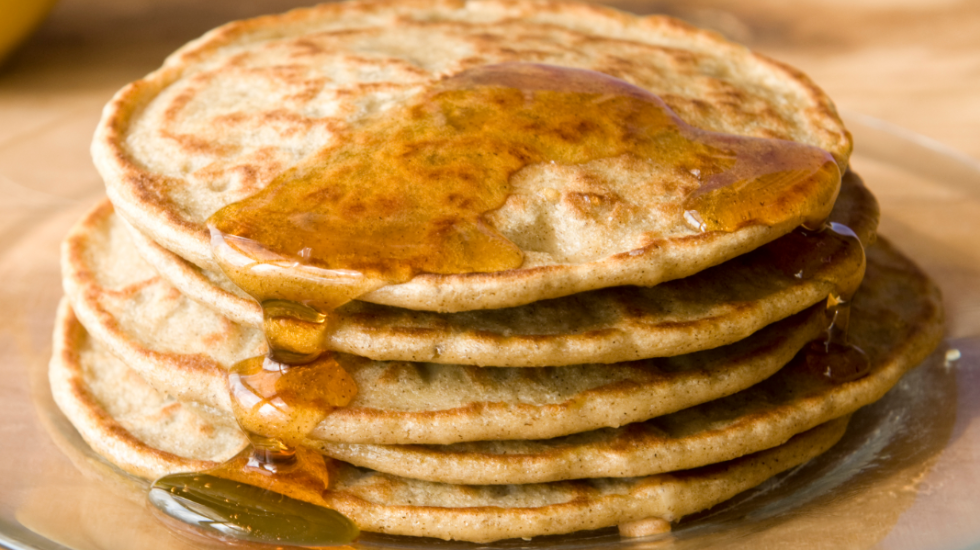
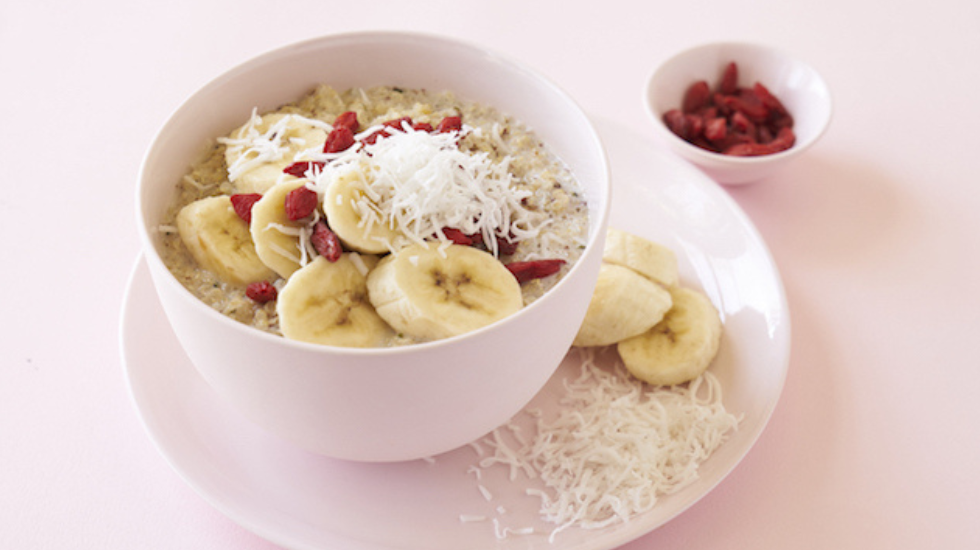
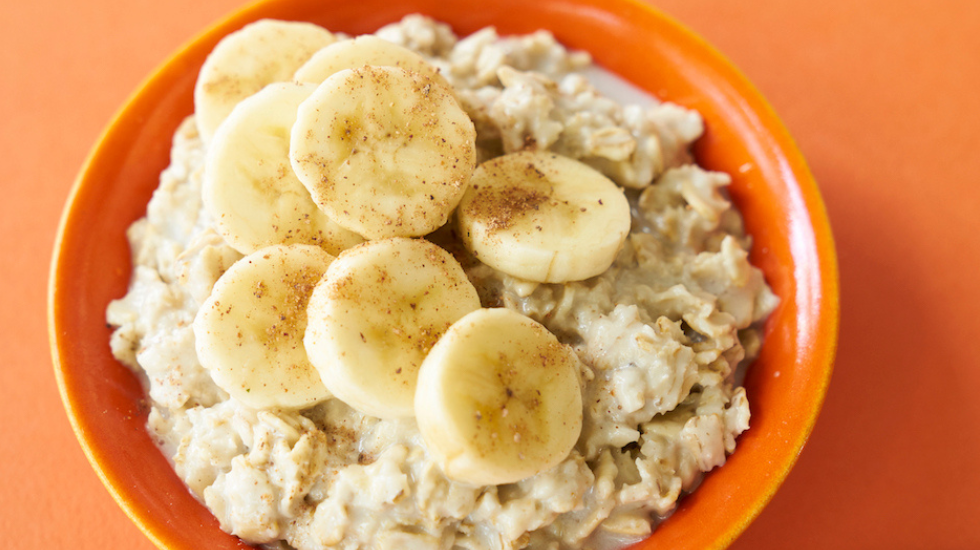
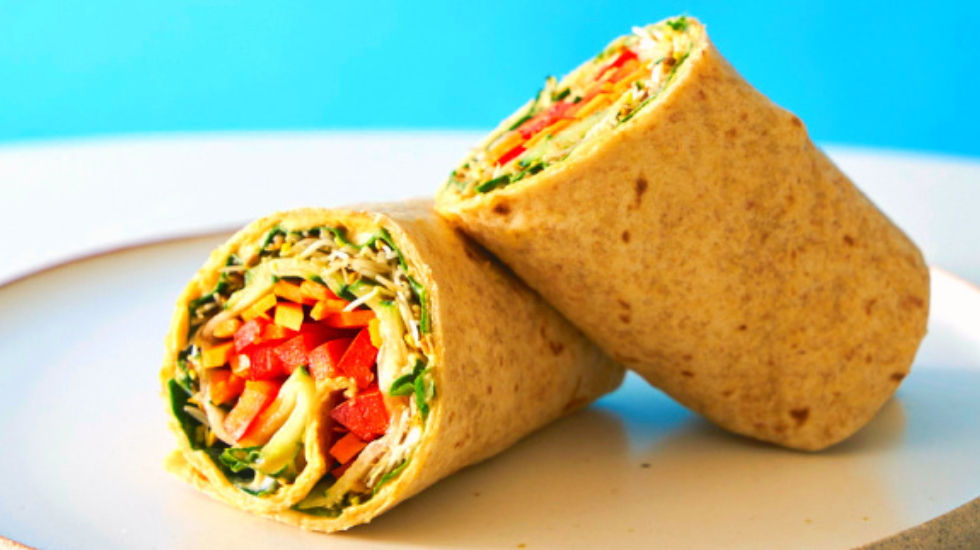
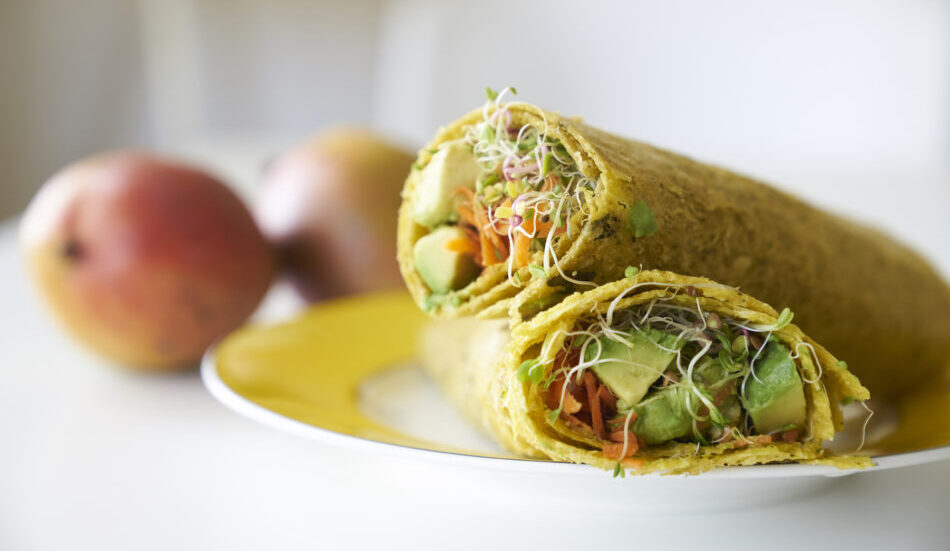
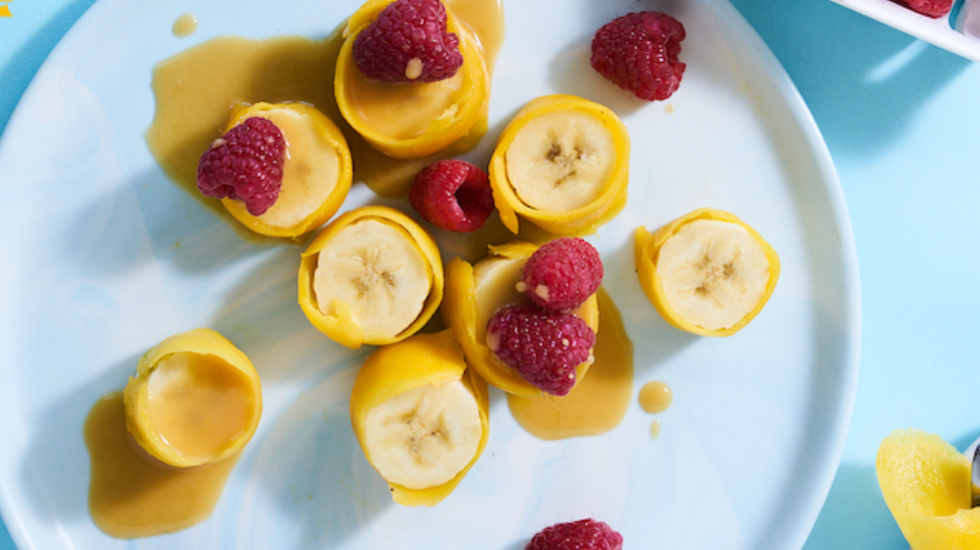
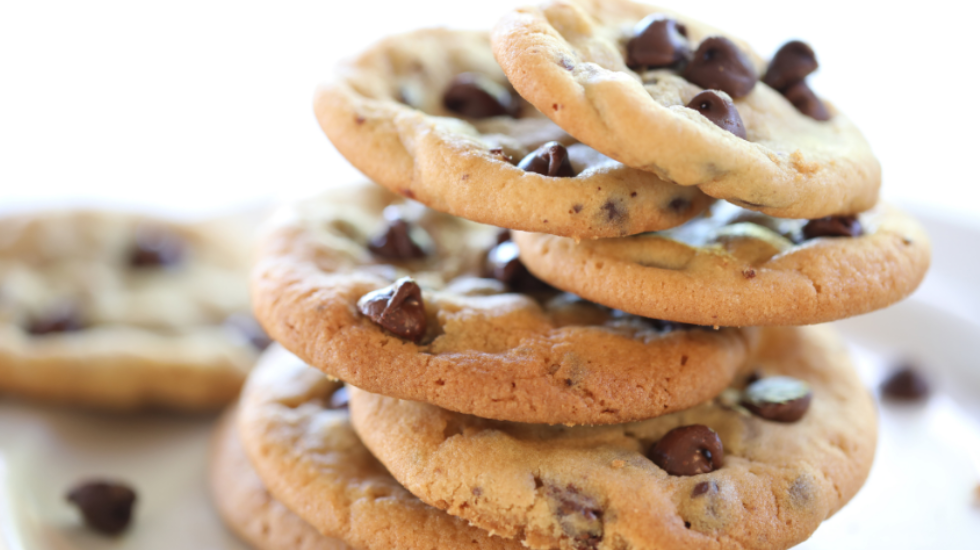
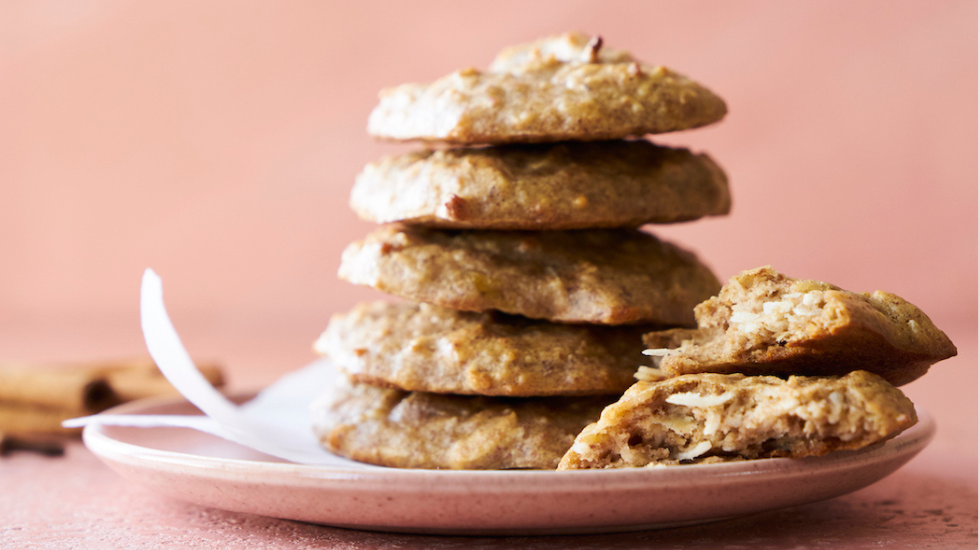
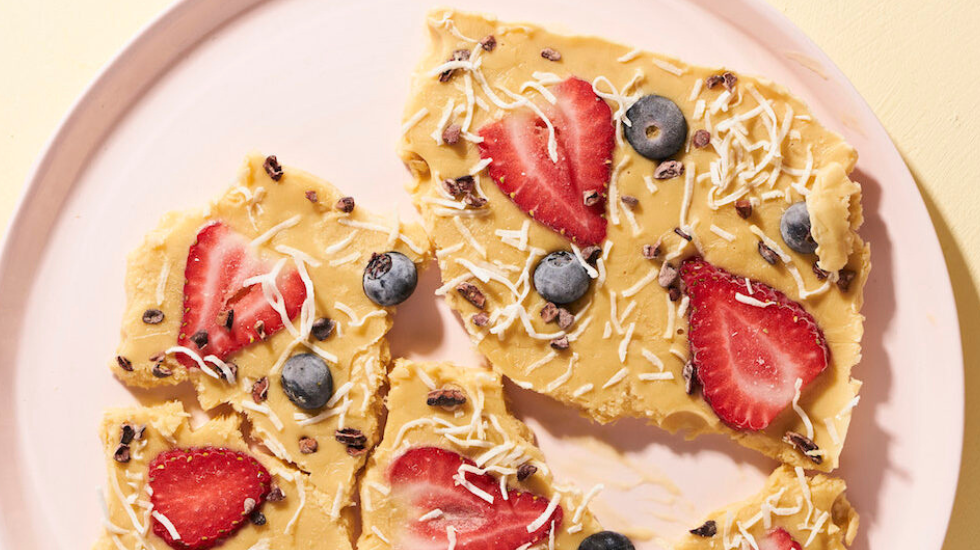
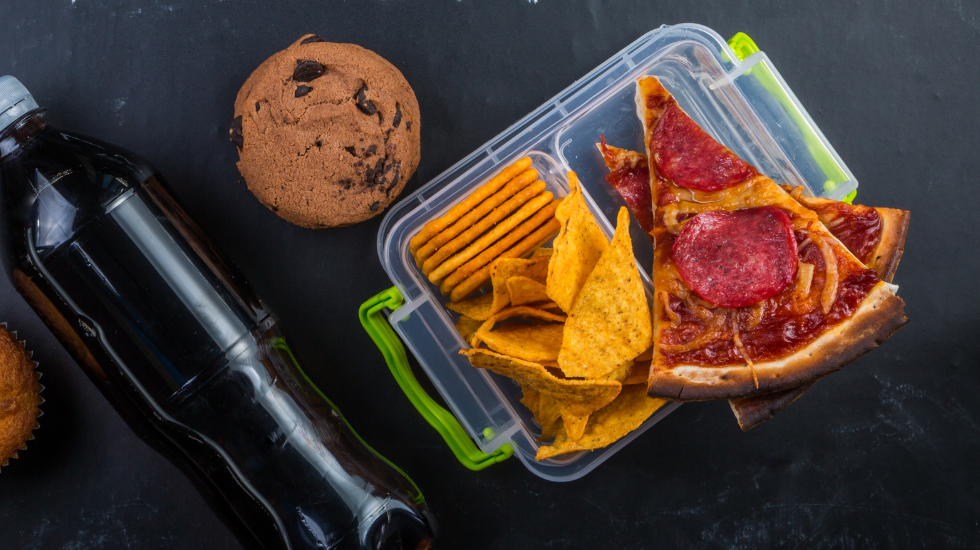

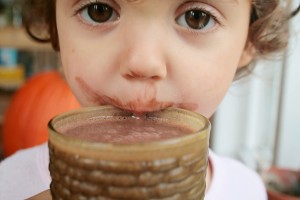
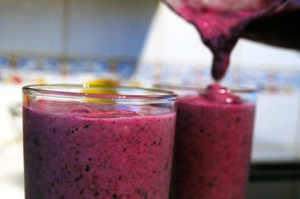
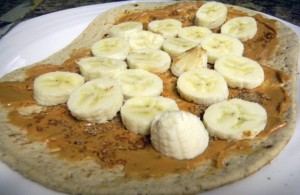
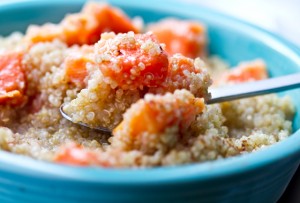
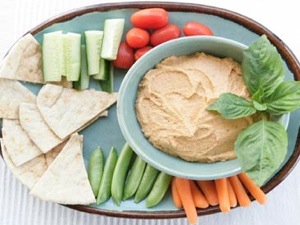
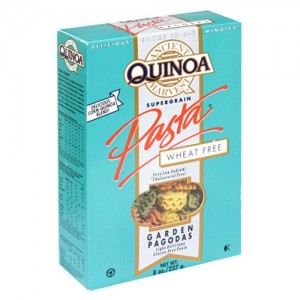
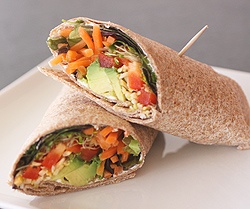
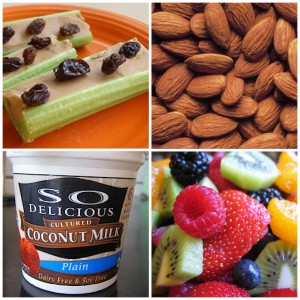 (celery sticks with almond butter and raisins)
(celery sticks with almond butter and raisins) Breads containing wheat
Breads containing wheat
Hi Kim, I had a quick question on the GGS. I joined up here recently and started on the GGS for the last few days. After drinking a fair amount of GGS, I am literally peeing my life away ! Is there someway to avoid this? I am a 6ft foot male and am wondering if this is too much liquid for the body to consume in a single meal?
This is great!!! Thank you!
Please include more with no nuts. Tons of kids are allergic to nuts. I use biscoff as an alternative to peanut butter and almond butter but am looking for another alternative since biscoff is high is sugar and probably not that nutritious.
Are there any granola bars or similar items you would recommend? Kind bars, etc? Loose packaged “granola” or something similar?
Thank you soo much for these tips. I’ve been needing some tips on what to give my children to eat, and here pops this email!!
thank soo much,
Signed HAPPY MOM! :)
Oh to be able to use tahini in the dips but any sesame product seems to be just about outlawed in every school here in the UK. I will give some of these ideas a try… it is inordinately difficult though to get them to try delicious looking to me food, colourful or not, they seem to be steadfastly defiant. I guess it’s a case of keep on keeping on but you just really don’t want them going hungry so you end up indulging them in a fail safe….
You clearly don’t have kids.
Love this!! I am always looking for healthy ideas/options for my kids. Thank you!!
Oh, I’ve been waiting for this link! Lunch/breakfast ideas for my 5 kiddos that are fast and yummy! We’ve needed something new.
Hey Kimberly- great ideas!
Any thoughts on almond milk and carrageenan? I heard it was really bad for you..
Thanks!
I heard carrageenan is bad for the gut, any thoughts?
Hey Jocelyn, Whole Foods sells their 365 Brand of organic almond milk without carrageenan. The unsweetened vanilla is my favorite, but the regular unsweetened is great too. Haven’t tried the sweetened varieties for obvious reasons…
Hi Kim,
My 10 year old son, soon too be 11 is terribily constipated for over 3 years and soils his underwear. I am a South asian and hence consume lentils, cooked vegetables and chicken and Rice. My Kids won’t eat salads .DO you have kids version of GGS. I even took him to a chriopractor to see if she could help. thanks
Raman,
I don’t have kids, but my husband was a meat and potatoes guy when we met, so it’s been a challenge to get him to eat more veggies. Here’s some tips that’s worked for my big kid lol:
(1) For the GGS, don’t put as many greens in the beginnings – maybe just a 1/4 cup of spinach and leave out the celery for now (so it’s just the fruit and a little spinach). Gradually start putting in more greens
(2) There are colored bpa cups w lids for green juices or green smoothies on amazon and other places. Healthy stuff is more fun when you can drink it w a straw!
(3) I pack salads for my husband and he has to eat it b/c he has no other option. Walnuts, dried cranberries, and sometimes a creamy dressing (Amy’s Organic green goddess dressing is yummy) are good to get someone used to salads. Maybe you can try packing a super small salad with a thermos full of cooked veggies and quinoa.
(4) I suffered from constipation growing up. The only thing that “cured” me was paying attention to food combining and having a probiotic rich diet. Coconut water kefir w/ a little pomogrande juice is maybe something he would like (Body Ecology makes a powdered kefir starter kit). If he’s not taking that, the probiotic that Kim recommends really is the best (Dr. Ohiora’s) – it’s pricey but worth it!
(5) I stay away from beans because they’re just really hard on my stomach. During this healing process for him, bone broth soups are really great at healing the gut and staying away from spicy food might help. Good luck. The principles of Kim’s program have really changed me life. It works well with other programs, like Body Ecology, to heal the gut and the body!!
Thanks for the tips! What gluten-free tortillas do you recommend?
Thank you Kimberly, I was just thinking about lunch options for my daughter!
Why wouldn’t you give your children bread with wheat? Wheat bread is the healthiest bread for you – that completely ignores the need active children have for good carbs.
Hi Kimberly! Always enjoy reading your posts! I was wondering if you still use millet? I love many of your millet dishes from the BDS. Is it ok to just soak chia for 10mins prior to eating, and ok to have 2 tbs everyday? Also, I eat a gluten free brown rice bread, which I found in the fridge of my local organic store. It seems to be the closest to what you describe in your book. Do you prefer tortillas/pitas over bread or are all equally good??
Thank you do much xx
I actually packed my son a veggie wrap last school term and he cried so much the school asked me to bring him another lunch. With you 100% on providing these foods choices to kids, but getting them to eat it….would love coaching on that.
I am full vegan and eat mostly raw, my husband won’t eat anything that DOESN’T have a face. The only thing we have have in common is neither of us eats packaged or processed food. My children want to live on pasta. Help?
Hi! Does anyone know if/where you can buy packets of frozen acai smoothie in Sydney, Australia? I’ve never heard of it, so am not sure if it’s available out here. Thanks!
Great post and so useful! I may make some of these for my husby’s lunch as well. But I’m confused! …I thought protein and starch weren’t supposed to be combined. For instance, in the Hearty Breakfast Quinoa, why is almond milk with quinoa ok, and brown rice and beans? (If anyone in the BDS community understands food combining, please feel free to jump in with any thoughts, ideas to clarify :) ! )
So can’t wait for your new book!
J~
I’m confused too!
Totally! I’m confused how these shack ideas work with food pairing – a lot seem to conflict? Chia and banana? Banana & carbs? I, too, am lost.
I believe that the BDS is more for cleansing and making your body cleaner because of all the “bad” stuff we ate while growing up. This is for kids (or anyone really) that just need healthier alternatives to the fast food/processed diets.
one of my favorites! I got more ideas for myself ( I don’t have kids yet lol) Great recipes!
Hi there Kim!!
Have got any recipe for making yogurt at home with any of the nut milk?
These are some great ideas, Kim! Thanks so much! I had a question about spirulina and food combining..when is the best time to have it, and should it be treated like a protein? Do I have to wait 3-4 hrs after eating it to consume another food group? Thanks.
Kimberly, please answer this post- I’m very confused now. I’ve tried to contact you in every way I know but I never get an answer… I understand that you are busy but I think a lot of people would benefit if you could clarify food combining for us. I’m so stressed about it that it’s getting to the point of tears… which sounds ridiculous, I know. I thought mixing proteins and starches was a no-go, and fruit should be eaten on an empty stomach… but in your recipes in this post, banana was mixed with almonds, fruit with chia seeds, and peanut butter (protein) with a tortilla (starch) and banana (fruit). Please, how is this valid? I hope I don’t sound accusing because that’s not my intention at all… but I am just about at my limit. Thank you.
Hi, I sooo hear you!! In the beginning I wasn’t sure I was pairing everything correctly and as good as the book is, there are some things missing. For instance, I had no idea how important vitamin B12 is! There is only one, short blurb about it in the book and I feel that B12 is super important, being that you can get very sick if you don’t know what you’re doing. There should’ve been a chapter on just B12. Also, the food pairing IS confusing and VERY limiting. I’ve had to relax quite a bit and just mis-combine at times just so I can eat and not have to stress out so much because there isn’t anything prepared or ready to eat that’s an okay combo.
Don’t get me started on all the prep-work, chopping, etc.
Also, I was very think to begin with and then lost weight as soon as I began, felt weak and dizzy so much of the time that I couldn’t exercise as I used to. It literally took about 5 months before I was able to begin exercising again and not lose more weight, but only due to the fact that I’ve added back foods the book frowns upon, like peanut butter (I’m not a fan of almond butter), white, sticky rice, organic potato chips, and lots of fish. (I know fish isn’t necessarily a no-no). The above foods have helped me from wasting away to nothing. I’m one of those people who burns right through a large meal in about a half-hour and then I’m hungry again. As you can imagine, waiting 3-4 hours before I eat again simply means that I don’t get enough calories in a day and I lose weight. I think the book should’ve taken body types and metabolisms like mine into consideration.
As much as the book helped me figure out where my digestive issues were coming from, when I finished the book I felt like I just didn’t have enough information. I tried to set up a consult with Kimberly so I could get the guidance I needed, but I was told I would have to go on a waiting list. I had to feel my way around on my own and I felt totally lost and frustrated.
I’ve heard rumor of a second book, but I sincerely hope she gives more and much needed information.
Anyway, try not to freak out too much and know that you don’t have to be perfect. Maybe try reading more books on food pairing, read blogs where you can actually get answers to your questions and try not to be so hard on yourself.
All the best,
Lis
hi kymberly,
i was wondering if you could post an alkaline food list… i have searched the internet and there seems to be conflicting results, i would really appreciate this information coming from a reliable source so i can start my journey the right way first time round…
thanks a bunch
Andi xx
This is right way, but how to avoid eating cheese, candy, processed meats and others, from other kids. If other kids eat them and offer to my kid – chips and cakes ? How to make my conviction on that to be good example uninfluenced from other kids food? :)
I think the easiest way is for children to understand that it is their decision. Let them know you will not have these items in the house but if they are at another child’s birthday party or a party at school, they can have it in moderation. Also, explain to them why you choose the foods you do for your household and also explain the pitfalls of these unhealthy options the other kids may be eating around them. Sometimes knowledge is the best answer.
And brown rice and beans?? Miscombined??
Kim-
How come the banana breakfast wrap is considered miscombining protein and carbs???
Are there any Bannana substitutes? My son is alergic to bannanas :(
can they eat seeds? if so, you should be able to sub sunflower seed butter!
Can you recommend a “sprouted grain, gluten-free” tortilla? All I’ve ever been able to find as far as whole grain and gluten-free are brown rice tortillas, but they’re not sprouted and don’t seem to hold up well to wraps as they crack easily. I live in Dallas, Texas and shop primarily at Whole Foods. Any suggestions would be great!
Just saw your post and I also live in East Texas. In Tyler we do not have a Whole Foods but do have a few small health food stores that carry a line of Ezekial bread. The Ezekial line make sprouted live grain bread, tortillas, pitas, and english muffin. Hopes this helps!
Is it bad to eat whole grain or wheat breads?? Why?
Wheat and other grains like spelt contain gluten which is hard for our bodies to digest and can actually damage the intestinal lining.
when eating chia seeds must you soak and rinse them to release enzyme inhibitors. If so please explain the process. I have soaked them before but find rinsing the gel difficult.
Hi Kim,
I heard that chia seeds lowers the bp if taken for a long time.
I already have low bp, can i take chia seeds?
Can i give chia seeds to my daughter(2.5 yrs old) or it may cause low bp in her, in the long run.
Thanks,
Kat
I see a few of your recipes call for almond butter or almond milk, my daughter has a moderate allergy to almonds, nuts in general are there any healthy alternatives to this.
Alternatives to almond milk include:
Coconut milk (not from the can)
Hemp milk
rice milk
I am pretty sure I have come across sunflower seed butter. It may be worth looking into for your daughter.
Wow! Thank you for the great ideas! I have 6 children in school and am incorporating healthy foods now. I love the recipes!! :)
My 3 year old has been diagnosed with food allergies. Peanuts, soy, eggs, hummus (probably the tahini), I am too afraid to give him nuts and has had reactions to other foods I believe were avocados, and maple syrup. These foods look like foods he will be allergic too. Any other ideas? My other child is a super picky eater.
What can you use in place of coconut milk and flour. Allergic to coconut
Instead of coconut milk, you can use almond milk or rice milk. As for the flour, feel free to use almond meal, or quinoa flour (quinoa isn’t a grain, so it’s a flour substitute). Hope this helps!
Breakfast ideas are so difficult to come up with. Smoothie recipes add wonderful variety to the breakfast menu as does your quinoa and breakfast wrap. I am always looking to build more variety in my breakfast menu. Do you have additional breakfast recipes or can you recommend other resources for breakfast ideas?
Hi Kimberly,
Acai berries are very expensive to buy in NZ, instead of frozen Acai berries, can i get the powder form and put frozen mixed berries instead?
Absolutely…do what works best for your situation and availability. Thanks for giving it a try and let us know what you think. Lots of love! Xx
I am regular visitor, how are you everybody? This piece
of writing posted at this web page is truly good.
Thanks so much and happy to have you a part of the community! ;)